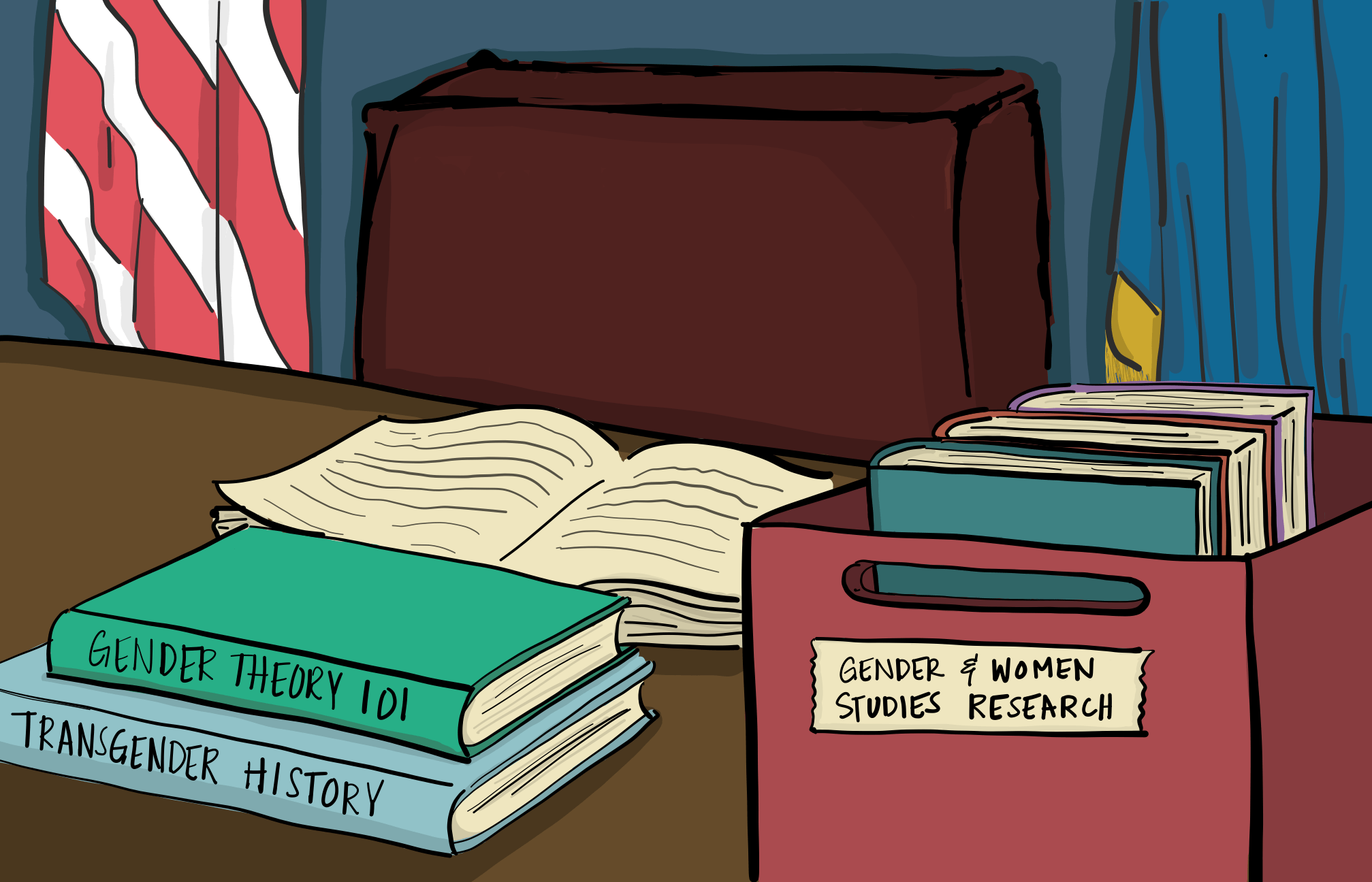Featured Artwork: Ariel Lung for The Daily Californian
![]()
When I tell people that I’m pursuing a minor in women’s studies, I’m often met with an eye-roll or two. I imagine this is because adults are amused and think it’s cute that I’m “entertaining feminist and social justice warrior notions” while still in college before I enter the real world where things aren’t as pretty or fair. And maybe that’s what I imagined when I signed up to take women’s studies courses. Yet, through these classes, I’ve not only learned about women’s issues, but I’ve also been able to explore and learn about different races, ages, classes, their representation in media, how the different intersections of identity have affected history, how gender and work interact, and so much more than just what people imagine women’s studies to be.
Because of this, I believe that all universities and colleges should require students to take a least one women’s/gender studies course during their academic career in order to help cultivate a more educated and empathetic generation. Imagine a world where discrimination is non-existent, equality isn’t a radical idea, and people function in a more empathetic society where we are all mindful of one another. This may seem like an idealistic utopia, but I think by taking women’s/gender studies courses our society could be one step closer to living in a more accepting world.
Such courses will help students better learn how and why women and minorities are oppressed. With this knowledge, individuals can help break some of the toxic gender cycles present in our society. Women’s/gender studies provide you with the tools to understand the explicit and implicit roles that gender plays in everyone’s life every day. By exploring the complexities of gender, we begin to understand gender’s powerful effect. These courses draw gender out, name it, dissect it, and most importantly, encourage students to challenge what they thought they knew. The goal of such classes is not only to provide an academic framework for the impacts of gender practices on social, cultural, political thought, and behavior, but also to provide advocacy and work towards social change. If one is aware of institutional discrimination, discriminatory policies and practices favorable to a dominant group and unfavorable to another group that is systematically embedded in the existing structure of society in the form of norms, in the workplace, they will be able to actively work to combat the hidden “–isms” that unfairly impact workers.
Women and people of color are often left out of traditional history books and classes. Taking a women’s/gender studies course allows students to recognize the accomplishments made and the strides taken by such individuals. Hopefully, a sense of appreciation and gratitude stems from this.
Traditionally taught history has been written, angled, and forwarded by men. The classes address the seeming absence of women in history, science, the arts, and politics, and they also offer new perspectives of reflection and analysis. In women’s and gender studies, students are introduced to a range of important thinkers, such as Audre Lorde and Bell Hooks. They scrutinize trends that ripple through history and uncover tropes that appear in popular culture. By engaging with women’s studies, a student not only strives to learn a more accurate history but also learn about and find ways in which we can learn and evolve, moving things in the right direction from here on, in our current day.
Finally, the content and issues covered in women’s/gender studies classes are something everyone can relate to. If students have a strong grasp on their own personal intersection, they will be able to apply their knowledge and function as more empathetic and culturally-aware citizens.
One of the pillars of women’s studies is the concept of intersectionality, how different forms of discrimination and oppression interact. Intersectionality tells us that there is no one singular experience for a person because of the way gender works in conjunction with race, ethnicity, social class, and sexuality. When students engage in self-reflection and recognize how their choices are impacted by their experiences with such characteristics, and how their choices affect others’ experiences, they become more thoughtful individuals which ultimately benefits society. If we applied this to debates about pay inequality and reproductive rights legislation, our conversations would be more nuanced, meaningful, and productive.
Universities should require students to take a least one women’s/gender studies course during their academic career because these courses will encourage students to seek social change, provide a more accurate portrayal of women’s role in history, and engage in self-reflection.
Women’s/gender studies courses rely on fostering dialogue and breaking down barriers of communication. Being encouraged to talk openly and to listen respectfully to another individual’s lived experience in a women’s and gender studies course is an education that cannot be overrated. It is the duty of higher education to push students to be able to have these conversations, absorb them, and be able to critically reflect on them.


Leave a Reply